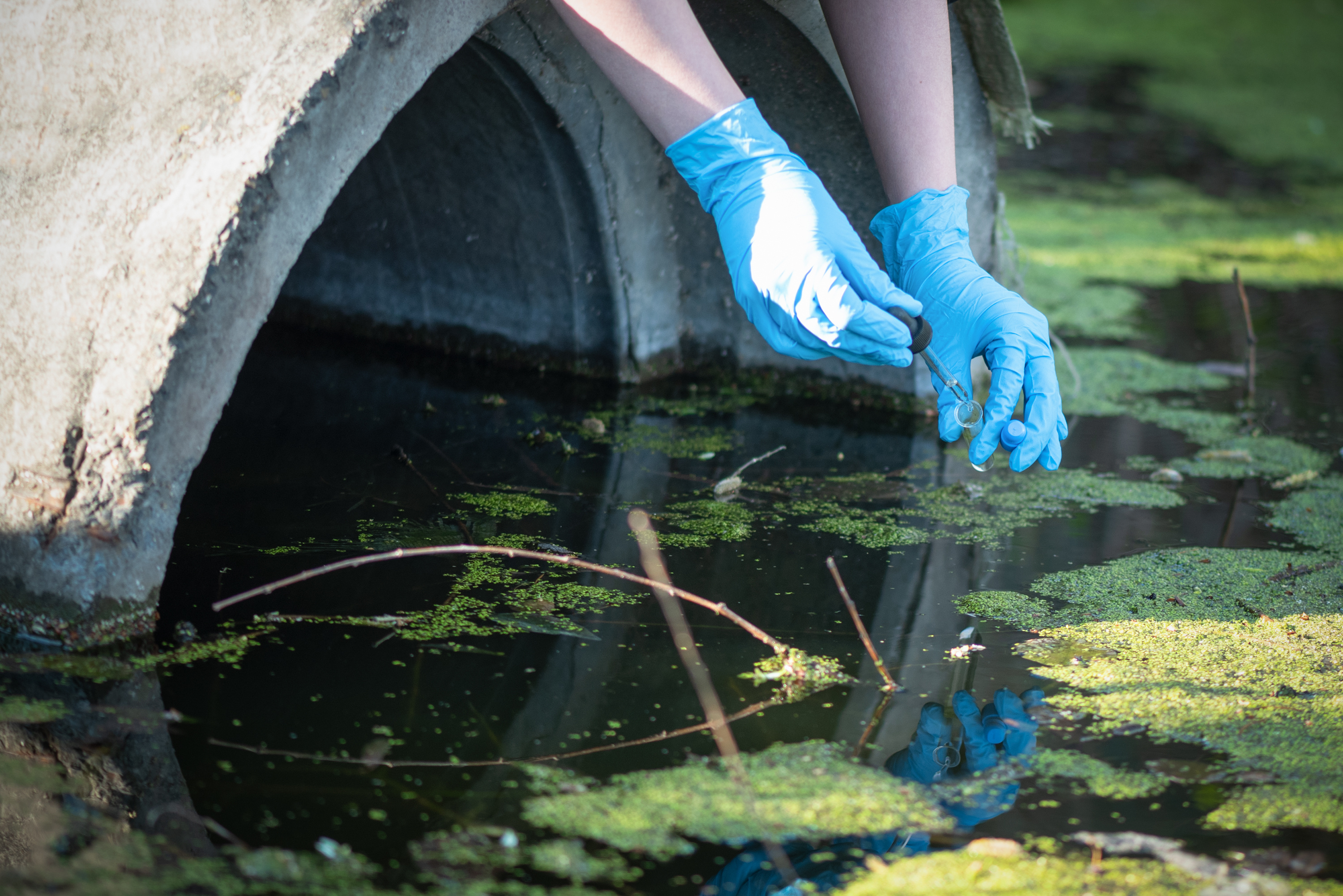 Algae Blooms / Excess Nitrogen
Algae Blooms / Excess Nitrogen
The primary pollution threat to Long Island Sound is too much nitrogen entering the water from wastewater treatment plants, septic systems, fossil fuel burning, and fertilizer use. High nitrogen levels lead to harmful algae blooms, low oxygen (“hypoxic”) areas, fish die-offs, and loss of the coastal marshes that protect communities from flooding and provide important wildlife habitat.
There are a wide variety of seaweeds and algae, which range from highly beneficial to harmful to toxic. Harmful algae blooms (known as “HABs”) and marine biotoxins have become increasingly menacing on the Sound—threatening important habitat, disrupting food chains for many marine species, and harming economically viable fisheries. Direct contact with toxic algae can cause skin rashes, gastrointestinal and respiratory disease, and liver damage. Consuming shellfish contaminated with biotoxins can result in paralytic shellfish poisoning (PSP) and amnesic shellfish poisoning (ASP), both potentially fatal conditions that can cause brain damage.
Warming waters caused by climate change also fuel the growth of algae, so it’s no surprise that the occurrence of toxic algae blooms is on the rise in the Northeast in both freshwater and marine environments.
Please join us in turning the tide on nitrogen pollution and its many harmful impacts.
What can you do?
 Report Pollution
Report Pollution
See something? Take a picture or video and say something!
 Reduce Fertilizer Usage
Reduce Fertilizer Usage
Excess nitrogen from fertilizer kills local wildlife.
 Green Your Lawn / Yard Practices
Green Your Lawn / Yard Practices
Many people are doing more harm than they realize.
 Inspect Your Sewer Lines / Septic
Inspect Your Sewer Lines / Septic
Homeowners are responsible for any leaks on their property.
 Upgrade to Low Pollution Septic System
Upgrade to Low Pollution Septic System
How long has your septic been in the ground? Time for an upgrade!
 Capture Stormwater with Green Infrastructure
Capture Stormwater with Green Infrastructure
Diverting stormwater from the system prevents flooding.
 Become A Pollution Watchdog
Become A Pollution Watchdog
Be on the lookout for any pollution entering our waterways.
 Water Quality Monitoring
Water Quality Monitoring
Collect water samples and help us monitor the health of Long Island Sound.
 Join the Movement
Join the Movement
Sign up for action alerts and stay connected to our campaigns.
